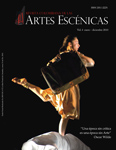Authors
Abstract
in its “intervention”, how to escape from the simple review and have a firm commitment for an autonomous task as long as it can go beyond the show? A critical task that can be thought in a didactic sense, promoting aesthetic criteria oriented to “activate the audience.”
Is it possible to think contemporary critique as a dramaturgy among the many that coexist in the theater field today? If it is so, which are its features and the demands it faces? Which would be our critical field style? Convinced that critique is a dialogue, an encounter between two voices –that of the author (creator) and that of the critic- in which none of them should have any privilege over the other, what conditions make dialogue today? Is it happening?
Keywords
References
Barthes, R. (1983). Ensayos críticos. España: Seix Barral.
Bett etini, G. (1996). La conversación audiovisual.Madrid: Cátedra.
Dubatt i, Jorge. (2009). “Crítica y verdad”.En: Revista TEATRALIDAD, Crítica y Verdad, Venezuela, No. 1.
Haydu, Susana. (2006). “Josefi na Ludmer:Algunas nuevas escrituras borran fronteras”. En: LA BIBLIOTECA, revista fundada por Paul Groussac, La crítica literaria en la Argentina. Buenos Aires: Biblioteca Nacional.
Jitrik, Noé. (2006). “Productividad de la crítica”. En: LA BIBLIOTECA, revista fundada por Paul Groussac, La crítica literaria en la Argentina. Buenos Aires: Biblioteca Nacional.
Le Breton, D. (2006). El silencio, aproximaciones. Madrid: Sequitur.
Panesi, Jorge. (2006). “Rojas, Viñas y yo (Narración crítica de la literatura argentina)”. En: LA BIBLIOTECA, revista fundada por Paul Groussac, La crítica literaria en la Argentina. Buenos Aires: Biblioteca Nacional.
Sontag, S. (1983). “La escritura misma: sobre Roland Barthes”. En: Ensayos críticos. España: Seix Barral.
Todorov, T. (1991). Crítica de la crítica. Barcelona: Paidós.

 PDF (Español)
PDF (Español)
 FLIP
FLIP









